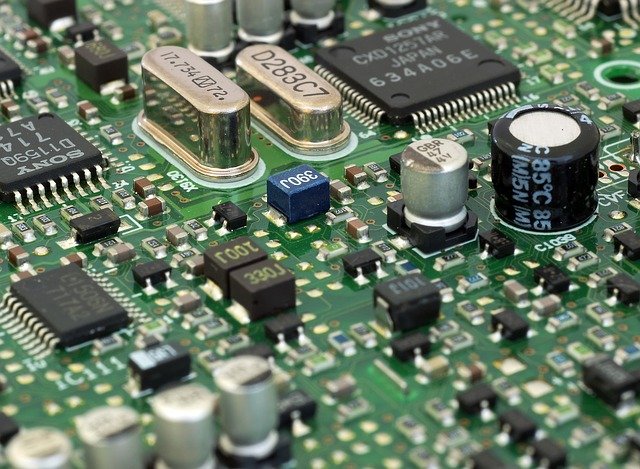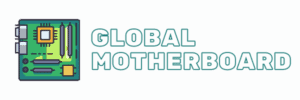There are usually no great differences in quality between them at the same price and, although they may vary in the chipset that they implement to control the different elements, that chipset is specified by the processor companies.
Manufacturers can add additional features, like a better audio or network chip, add more or fewer PCIe and storage slots like M.2, or even add LEDs for game boards. But the motherboard sector is very mature and almost all of them are of good quality. There may be a specific model that turns out bad, but it generally has to do with a less common use, such as raising the processor frequencies.
Best Quad Processor Motherboards In 2021
Below are the list of some best top quad processor motherboards which are good in performance and speed.
GIGABYTE X570S AERO G
About this item
- Supports AMD Ryzen 5th Gen/ 4th Gen/ 3rd Gen/ 2nd Gen Processors
- Dual Channel ECC / Non-ECC Unbuffered DDR4 memory, 4 DIMMs
- Effective cooling solution design for the better thermal dissipation
- Wi-Fi 6 2×2 802.11ax with an all new antenna support for better signal
- High-bandwidth and low-latency network support by Intel 2.5GbE LAN
ASUS ROG Zenith II Extreme Alpha
About this item
- 1. Ready for AMD 3rd Gen Ryzen Threadripper Processors: PCIe 4. 0 ready, 4733Mhz memory OC performance, with up to five M. 2 drives and USB3. 2 Gen2x2 support
- 2. Robust power delivery: Optimized power solution with 16 Infineon TDA21490 teamed up power stages, ProCool II power connectors, microfine alloy chokes and 10K capacitors
- 3. Comprehensive thermal design: Active-cooling VRM heatsink, PCIe-zone M. 2 aluminum heatsink, backplate, Fan Extension Card II and water-cooling zone
- 4. High-performance networking: Onboard Aquantia 10 Gbps Ethernet, Wi-Fi 6 (802. 11ax) with MU-MIMO support, and GameFirst V technology
- 5. Unmatched personalization: Color OLED display and ASUS-exclusive Aura Sync RGB lighting, including two additional RGB headers and two addressable headers
- 6. Industry-leading ROG audio: SupremeFX S1220 and ESS SABRE9018Q2C for enthusiast-grade audio performance, featuring Japanese capacitors
- 7. DIY-friendly design: Pre-mounted I/O shield, ASUS SafeSlot, BIOS FlashBack and FlexKey
GIGABYTE TRX40 AORUS PRO WiFi
About this item
- Supports 3rd Gen AMD Ryzen Threadripper Processors
- Quad Channel ECC/ Non-ECC Unbuffered DDR4, 8 DIMMs
- 12+2 Phases Infineon Digital VRM Solution with 70A Power Stage
- Advanced Thermal Design with Fins-Array Heatsink
- Intel GbE LAN with cFosSpeed Internet Accelerator
ROG Strix TRX40-XE Gaming AMD
About this item
- AMD Socket sTRX4: Designed for 3rd Gen AMD Ryzen Threadripper series processors (support up to 64 core)
- Optimal Power Solution: 16 power stages with ProCool II power connector, high-quality chokes and durable 70A capacitors to support multi-core processors
- Comprehensive cooling: Active cooling VRM and Chipset heatsink, stacked-fin heatsink, with on-board dual M.2 heatsinks and a water pump+ header
- Unmatched personalization: OLED and Aura Sync RGB lighting, including RGB headers and addressable Gen 2 RGB headers
- Gaming networking: 2.5Gbps LAN and Intel Gigabit Ethernet, WiFi 6 (802.11ax)
ASUS ROG Zenith II Extreme Alpha
About this item
- 1. Ready for AMD 3rd Gen Ryzen Threadripper Processors: PCIe 4. 0 ready, 4733Mhz memory OC performance, with up to five M. 2 drives and USB3. 2 Gen2x2 support
- 2. Robust power delivery: Optimized power solution with 16 Infineon TDA21490 teamed up power stages, ProCool II power connectors, microfine alloy chokes and 10K capacitors
- 3. Comprehensive thermal design: Active-cooling VRM heatsink, PCIe-zone M. 2 aluminum heatsink, backplate, Fan Extension Card II and water-cooling zone
- 4. High-performance networking: Onboard Aquantia 10 Gbps Ethernet, Wi-Fi 6 (802. 11ax) with MU-MIMO support, and GameFirst V technology
- 5. Unmatched personalization: Color OLED display and ASUS-exclusive Aura Sync RGB lighting, including two additional RGB headers and two addressable headers
- 6. Industry-leading ROG audio: SupremeFX S1220 and ESS SABRE9018Q2C for enthusiast-grade audio performance, featuring Japanese capacitors
- 7. DIY-friendly design: Pre-mounted I/O shield, ASUS SafeSlot, BIOS FlashBack and FlexKey
Source: asus.com
How To Choose Your Motherboard
Motherboard manufacturers put the name of the chipset in the name of the motherboard, and this chipset will define the connectivity of the motherboard as well as its use orientation : normal, gaming , overclocking , or more commonly a mixed overclocking / gaming .
The difference between a normal board and an overclocking board is in the quality of its components – capacitors , protection against interference, adaptation for liquid cooling, others – to allow the objective of achieving stable frequency increases to processor and memory. They are usually plates that are sold from 90 euros.
The chipset of the motherboards determines the type of processor that the motherboard accepts, how many USB ports it can support, how much RAM it can handle, or the graphics card connections that it supports. When choosing a motherboard, you will have to think about what you want to include RAM, hard drives, SSD, type and number of graphics cards, etc.
Next, you will have to choose one that fits your budget. There is no noticeable difference in quality between an expensive motherboard – above 90 euros, other than overclocking – and a cheap one – one of 40 euros – , only of connections and expansion possibilities. In the event that you want an overclocking board , you do have to be more careful when making the choice.
Of course, there are exceptions and a bad one can come out of a manufacturer, but it is not usual. For this motherboard article I am going to provide several purchases that I think are interesting depending on the processor socket, which will be the first filter that you are interested in establishing when buying a motherboard, and based on our recommendations for the best processors of the moment .
Motherboards Size
The motherboards are offered in several formats to be used in different sizes of PC. Their sizes are standardized so that they fit seamlessly into PC cases, although there are manufacturers that can stretch each size a bit according to your needs. The most common sizes are:
- ATX: Measuring generally 305 × 244 mm, this is the size that offers the most magnification possibilities. They are generally more expensive than other smaller formats, and in many cases a normal user will not need them.
- Micro-ATX: they normally measure 244 × 244 mm, and it is the recommended size for most users and also because it has a more moderate price.
- Mini-ITX: measures 170 × 170 mm, and they are intended for mini-PCs of all kinds, including barebones or multimedia centers, and generally integrate Wi-Fi and Bluetooth connectivity.
- Extended ATX (E-ATX) –Measures 305 × 330 mm, and when a lot of electronics are stuffed into a motherboard, or they have larger size sockets / sockets, the motherboards also have to be larger than standard. The E-ATX is sized

There are other sizes of much less common motherboards, such as flex-ATX, but few people will need them, and therefore they are not included in this article, which is aimed at generalist, professional or gaming equipment use.
What Motherboard (Chipset) Does My Processor Need?
If you have looked at a specific processor you will need to know which chipsets are compatible with it to choose a suitable motherboard. Below I summarize in a table the processors and chipsets that are currently on the market. Keep in mind that the choice of chipset also depends on the orientation of the equipment and I do not include all those that are compatible with the processor but those that I recommend looking for them. Usually, the name of the chipset is indicated in the name of the motherboard.
If you want to build a team cutting costs, there is nothing that prohibits combining a cheap motherboard of 50-60 euros with a Core i7 processor of 300 euros. The only thing that will limit you in that choice is the ability to upload frequencies to the processor or the memory speed that can be used on the motherboard.
Regarding Windows 11 compatibility , all motherboards in this article are TPM 2.0 compliant . Generally, cheap chipsets will only have the head to put a TPM card that is purchased separately, while the more expensive TPM 2.0 will be integrated directly into the motherboard. You will have to consult that in the description of the motherboard. If you have any questions, ask me in the comments .
Things To Consider When Choosing A Motherboard
Here are some recommendations to keep in mind before choosing a motherboard. They may seem basic to someone who knows about computers, but there are many people who are looking for a bit of guidance and advice since they do not know anything about PCs, and they may find it interesting.
- Spending more than 80-100 euros on a motherboard is often a waste of money, unless you really need the expansion options they offer, or you have the money to invest in one.
- Above 100-120 euros you will find good or at least decent motherboards for overclocking or that provide features for gaming / gamers, such as better input-output device drivers, lower network latency, etc. In practice the difference for a normal user is not noticeable, unless you know that you are looking for it for a good reason, so I insist that you look for a plate below 70 -100 euros.
- If you go for an AMD processor, keep in mind that all Ryzen processors are unlocked to raise their frequencies, and therefore you can gain an interesting additional performance accompanied by adequate cooling. In this case, it may be a good idea to go for a good motherboard, about 100 euros or more.
- At Intel, take it for granted that if you swap out the processor for one from a couple of later generations you’re going to have to switch motherboards because the socket they use has probably changed. If it is from the same socket, you will have to make sure that the BIOS accepts the new processor, and it is usually necessary to update it by downloading the new version from the manufacturer’s website.
- The Ryzen 1000 to 5000 use the same AM4 socket, but depending on which processor you choose, the chipset may not be compatible or you may have to install a different BIOS to be able to use the processor. If you want to simplify your existence, opt for a B450 chipset motherboard onwards.
- The consumption of the motherboards themselves is in most cases less than 10 W, depending on the manufacturer, socket and chipset. For example, the LGA 1155 with an Intel 300 series chipset is about 6-10 W. The total consumption of the motherboard will depend on the additional chips that the manufacturer includes, such as a chip for a second Ethernet, better audio, etc., and what connectivity or features are active.
- Make sure that the PC case you buy has the anchors for the format of the motherboard you choose.
- Motherboards can have several power connectors but the only one required is the 24-pin ATX. They can work without connecting the four and eight-pin power supply PCIe but it can cause instability if what is connected to the motherboard consumes more than what the connector or connectors are in place. For this reason, it is always recommended that all power connectors be populated even if it is not necessary.
- As I said previously, all motherboards are TPM 2.0(Trusted Platform Module) compliant for Windows 11 , either having the header to fit a TPM 2.0 card or having the Trusted Platform Module built into it. When in doubt, ask.






